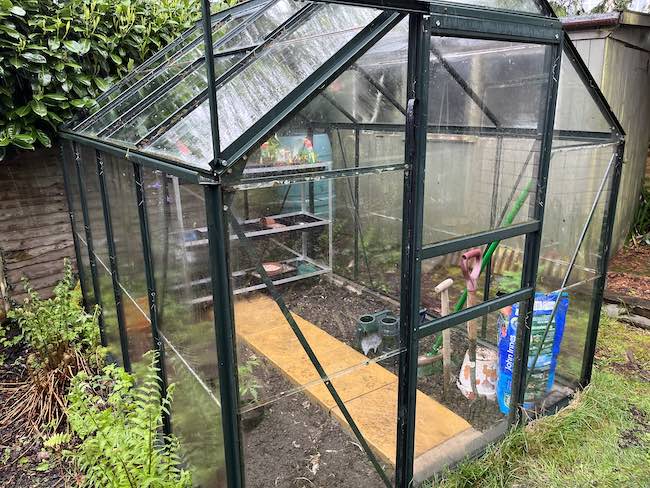
Spring is the perfect time to set up a glasshouse, as the days get longer and warmer, providing the ideal environment for young plants to thrive. Whether you are an experienced gardener or a beginner, setting up a glasshouse requires a few key tasks to get it off to a good start.
Cleaning your glasshouse
One of the first tasks is cleaning the glasshouse to control pests and diseases. This includes removing any debris, such as fallen leaves and plant remains, which can harbour harmful insects and diseases. You can also use an organic cleaning solution, such as a vinegar solution, to clean the glass and frames of the glasshouse. This will help to keep the glasshouse free of harmful insects and diseases, allowing your plants to grow healthy and strong. Learn more about cleaning your glasshouse
Sowing some seeds
Once you have cleaned your glasshouse, the next step is to sow seeds. Spring is the perfect time to sow seeds of plants such as tomatoes and cucumbers. These plants require warm temperatures to germinate and grow, so it’s important to sow them at the right time to ensure a good crop. You can sow your seeds in trays filled with compost, and keep them in a warm and well-lit area until they germinate.
In addition to sowing seeds, you can also buy young plants to create early crops. Plants such as chillies and peppers are ideal for growing in a glasshouse, as they require warm temperatures and plenty of sunlight. You can purchase these plants from a local garden centre or online, and transplant them into your glasshouse growing beds.
Buying some young vegetable plants
Buying plants in May such as peppers and chillies can save time and produce early crops, Crops such as chillies and peppers need to be sown before Christmas to produce plants bath will crop in the UK season so buying your plants in May from a supplier or grow can save time and money on heating through the later winter months.

Preparing the soil in growing beds
Preparing the soil in your glasshouse growing beds is also an important task. You can do this by adding organic matter, such as compost or well-rotted manure, to the soil. This will help to improve soil structure and fertility, providing your plants with the nutrients they need to grow. You can also add a slow-release organic plant feed to the soil to provide your plants with a steady supply of nutrients throughout the growing season.
Setting up organic pest control methods
Finally, setting up organic pest control methods such as companion planting can help to keep harmful insects at bay. Companion planting involves planting certain plants together that have natural pest-repelling properties. For example, planting marigolds or calendula next to tomatoes can help to deter whiteflies and other pests.
Setting up a glasshouse in the spring requires a few key tasks such as cleaning, sowing seeds, planting young plants, and preparing soil growing beds. With these tasks completed and organic pest control methods in place, your glasshouse will be off to a good start and you’ll be well on your way to a successful growing season.





















